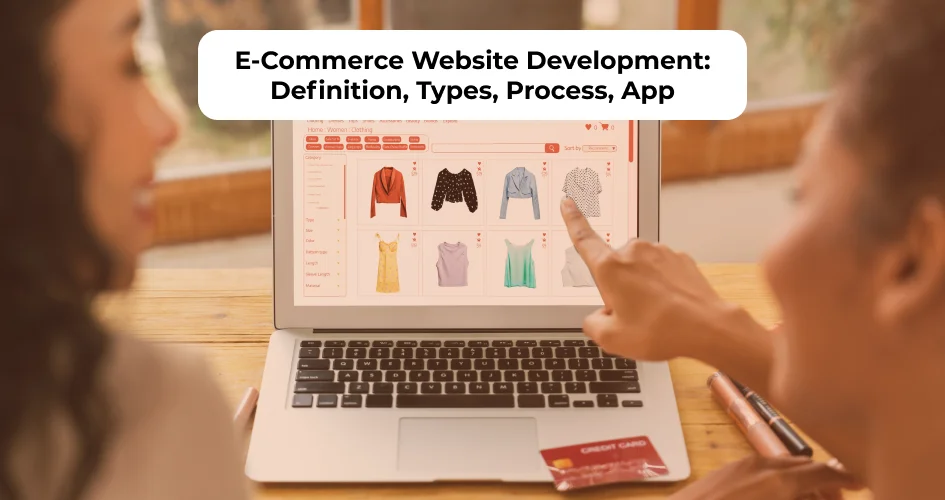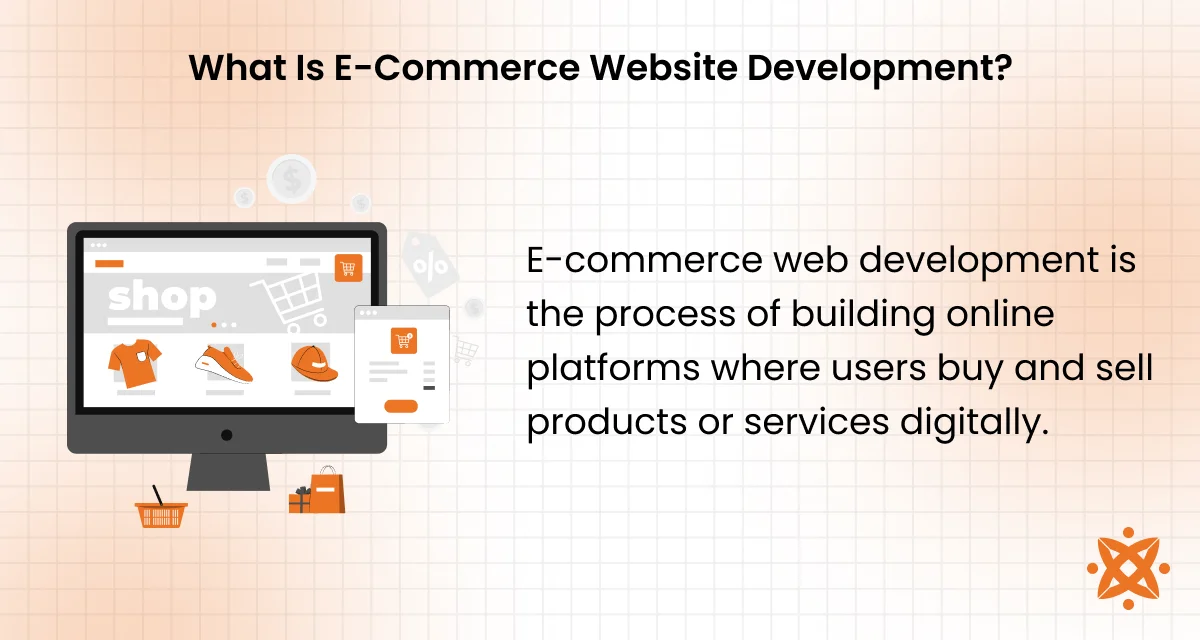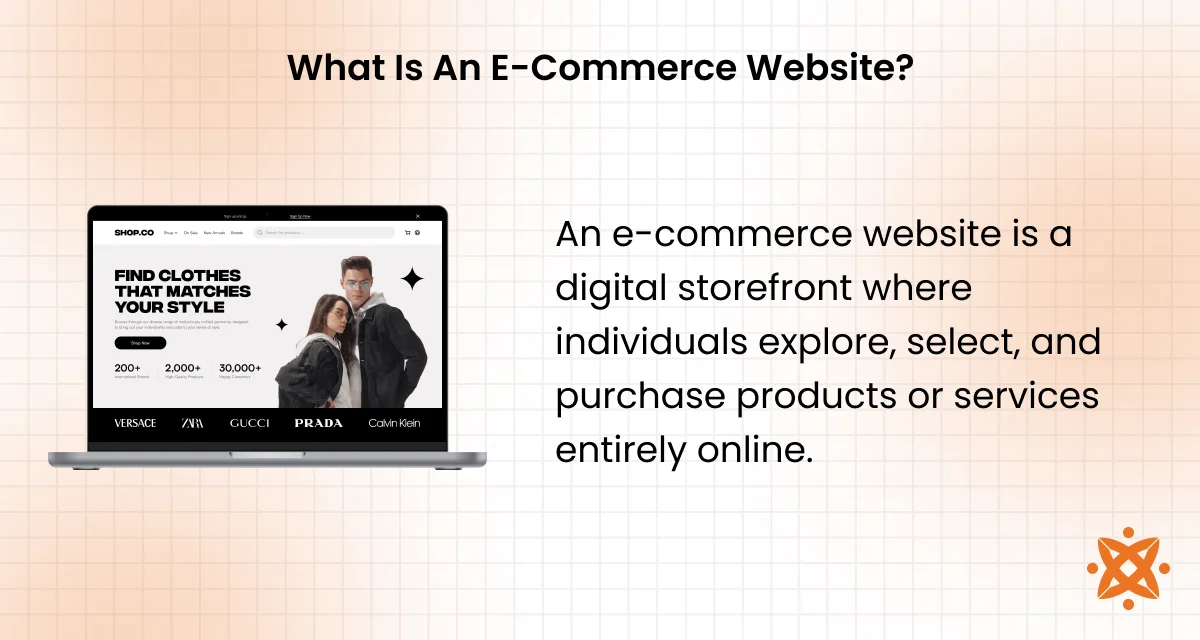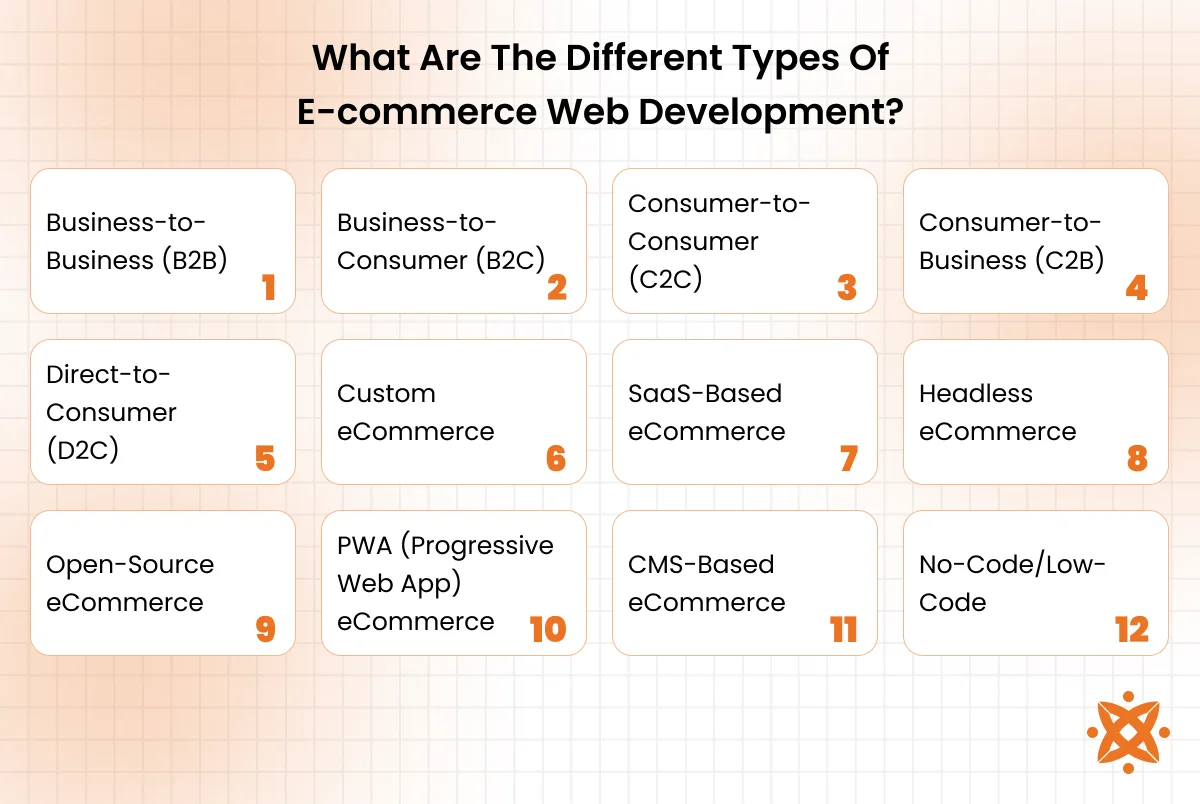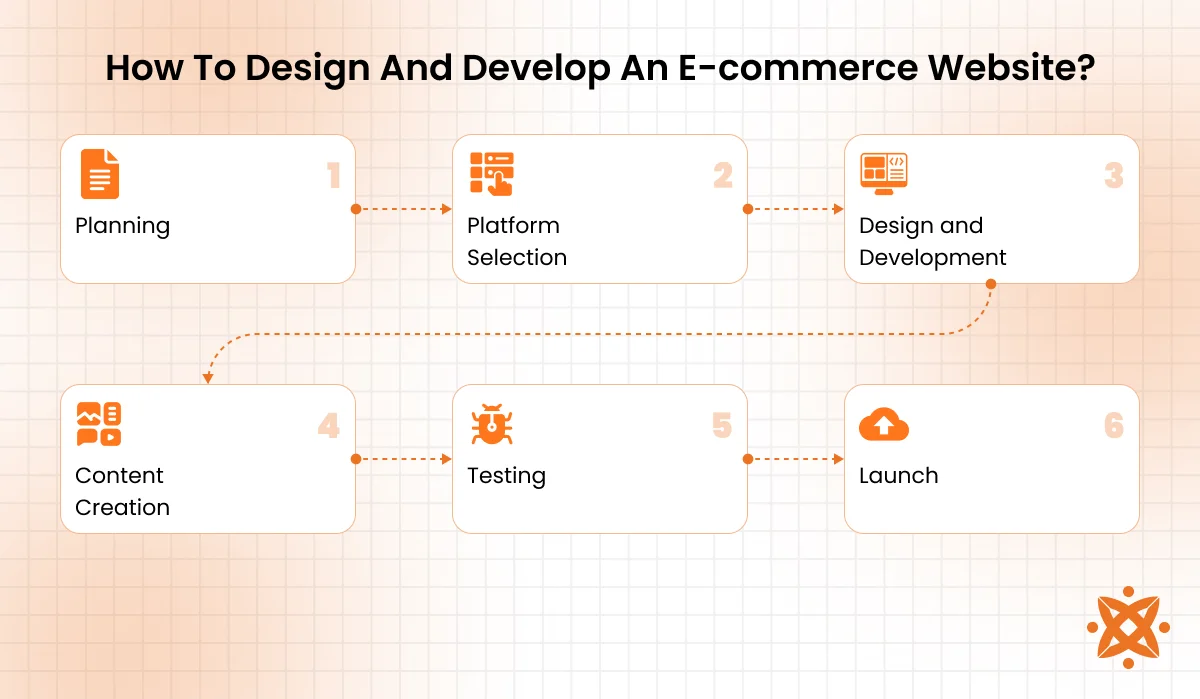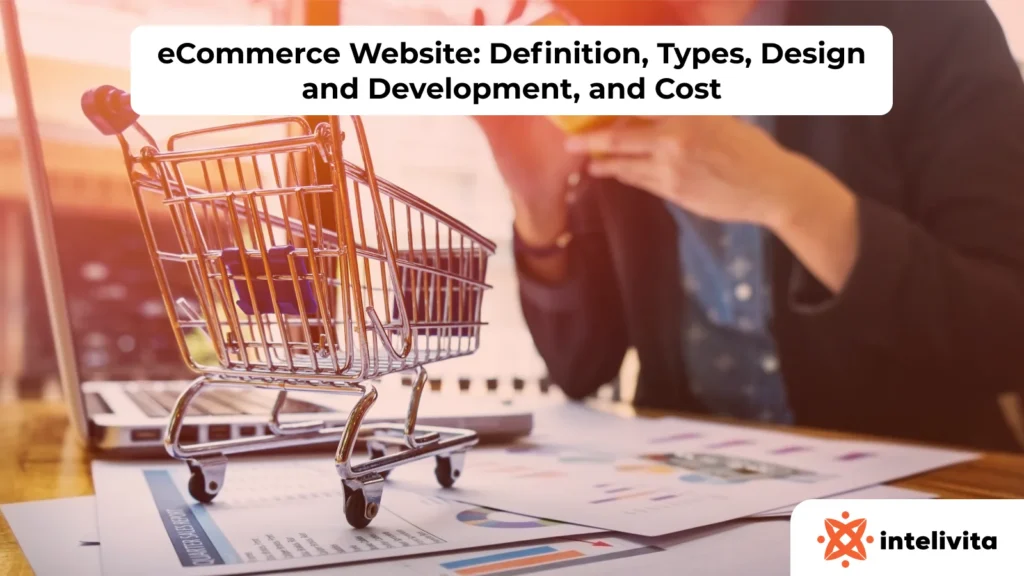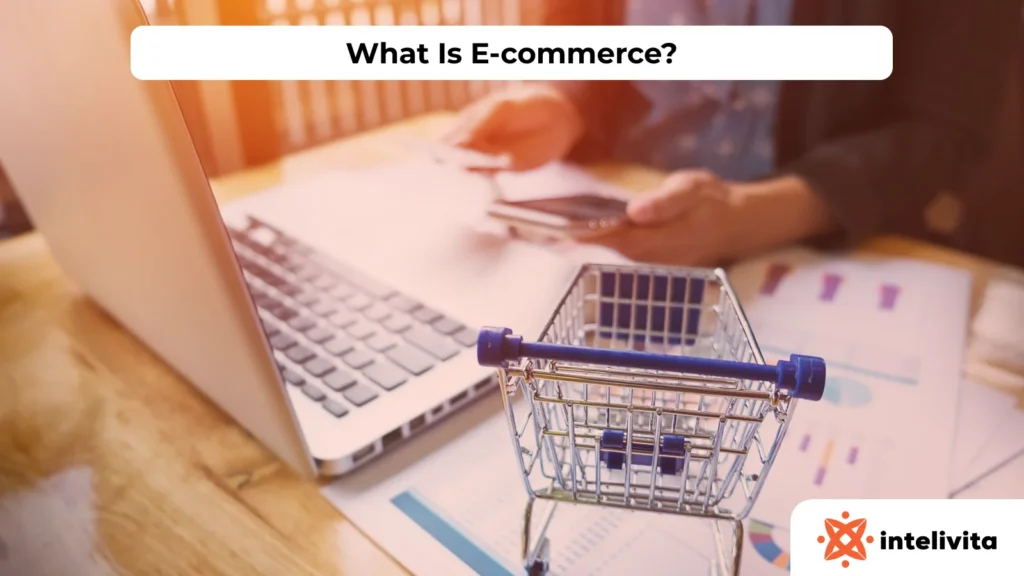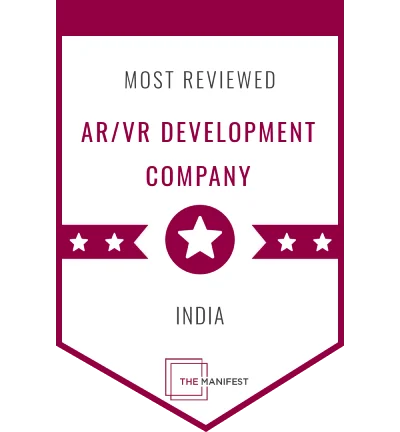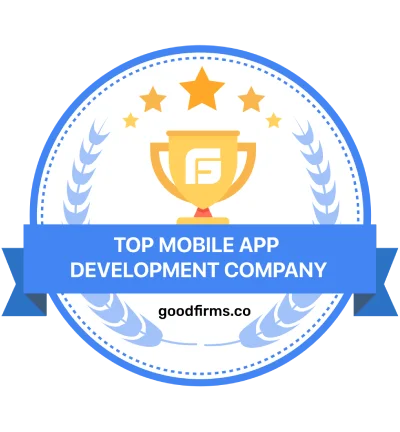E-commerce website development encompasses the full scope of planning, design, platform integration, and backend engineering required to deliver seamless shopping experiences. A modern e-commerce platform involves shopping cart integration, secure payment gateway implementation, search engine optimization (SEO), and mobile-friendly design.
The different types of e-commerce web development include B2B, B2C, C2C, C2B, and D2C, custom, SaaS-based, headless, open-source, PWA, CMS-based, and no-code/low-code builds. Each type serves specific business structures and determines the kind of technical stack and architecture required to meet user needs.
The common tech stack used for e-commerce website development includes MEAN, MERN, LAMP, Django + React, and Ruby on Rails + PostgreSQL. They combine robust front-end and back-end technologies with secure, scalable databases and cloud infrastructure.
To build an eCommerce website, the process includes planning, platform selection, design and development, content creation, testing, and launch. Each phase is designed to ensure a user-friendly interface, high performance, and long-term scalability.
To build an ecommerce app, development focuses on implementing core features like product discovery, smart search, cart, and checkout, alongside push notifications, analytics, and secure authentication. The finished app is tested across devices and then published to app stores for a wide reach.
According to a study by OuterBox (2023), the average cost of building an eCommerce site ranges from $5,000 to over $75,000, depending on features and technology.
What Is E-Commerce Website Development?
E-commerce web development is the process of building online platforms where users buy and sell products or services digitally. It covers everything from coding and server setup to user interface design, shopping cart integration, product management, and secure checkout systems. You create an online store that handles inventory, payments, and customer interactions, all in one digital space.
The main benefits of e-commerce web development include reaching a global audience, running 24/7 operations, reducing physical overhead, personalizing customer experiences, and automating sales processes. These platforms support scalability, enabling businesses to grow faster with lower marginal costs.
The journey of e-commerce website development began in 1994 when NetMarket made the first secure online transaction. In the late 1990s, platforms like eBay and Amazon reshaped digital retail. Over the 2000s, advances in front-end technologies, database management systems, and payment gateways made e-commerce accessible to small businesses.
Today, innovations such as PWA e-commerce, headless e-commerce, and no-code e-commerce are pushing the field further, enabling faster development and richer customer experiences.
What Is E-Commerce Website Design?
E-commerce website design is the visual and structural planning of an online store’s interface. It involves creating a layout that guides users through product discovery, shopping, and checkout with clarity and ease. Unlike general web design, it prioritizes conversions, usability, and secure functionality across devices.
The primary purpose of e-commerce website design is to ensure a smooth, intuitive shopping experience that keeps users engaged and leads them to complete purchases. Design elements are strategically placed to reduce friction, build trust, and highlight calls to action, all while aligning with the brand’s identity.
Common tools and frameworks used in e-commerce website design include Adobe XD, Figma, Sketch for UI/UX prototyping; Bootstrap and Tailwind CSS for responsive layouts; and front-end libraries like React, Vue.js, and Angular. E-commerce platforms like Shopify, Magento, and WooCommerce provide design templates and frameworks customized for online retail.
Best practices in e-commerce website design include keeping navigation simple, optimizing for mobile devices, using high-quality product visuals, enabling fast page loading, and incorporating customer reviews. Clear CTAs, trust badges, and well-structured product categories also enhance credibility and usability.
What Is An E-Commerce Website?
An e-commerce website is a digital storefront where individuals explore, select, and purchase products or services entirely online. These platforms eliminate the need for physical interaction, allowing users to browse inventory, place orders, and make payments in a refined, virtual environment.
Instead of simply showcasing information, an e-commerce site facilitates full transactions, handling everything from product display to order fulfilment and customer service.
Major examples of an e-commerce website include Amazon, Walmart, eBay, and Etsy, which operate on different models like B2C e-commerce, C2C platforms, and D2C e-commerce.
An effective e-commerce website is built around essential features such as user-friendly navigation for easy browsing, secure payment gateways to protect financial data, and a responsive design that performs well on mobile devices. It also includes real-time inventory systems, customer accounts with order tracking, and integrations for SEO and analytics tools to monitor traffic and behavior.
For small businesses, the benefits of having an e-commerce website include reduced overhead costs, 24/7 sales opportunities, wider market access beyond local regions, and better data-driven decision-making.
This digital approach allows startups and local vendors to compete with larger enterprises by enhancing visibility and customer engagement without heavy infrastructure investments.
What Are The Different Types Of E-commerce Web Development?
The different types of e-commerce web development are Business-to-Business (B2B), Business-to-Consumer (B2C), Consumer-to-Consumer (C2C), Consumer-to-Business (C2B), Direct-to-Consumer (D2C), Custom, SaaS-Based, Headless, Open-Source, PWA and No-Code/Low-Code. Each type represents a different model or approach to building online stores, customized to specific transaction flows, technical needs, and business goals.
The different types of e-commerce web development are as follows:
Business-To-Business (B2B) E-commerce Web Development
B2B e-commerce web development focuses on building platforms where one business sells products or services directly to another company. These websites handle bulk purchasing, recurring orders, negotiated pricing, and multi-user accounts, catering to wholesalers, manufacturers, and distributors operating in a structured supply chain.
Examples of B2B platforms include Alibaba, ThomasNet, and Grainger. These sites prioritize efficiency, order tracking, personalized catalogs, and integrations with ERP and CRM systems, streamlining complex commercial transactions between large-scale buyers and sellers.
Business-To-Consumer (B2C) E-commerce Web Development
B2C e-commerce web development builds online stores where businesses sell directly to individual customers. These platforms focus on fast, seamless shopping experiences with features like product discovery, ratings, wishlists, and secure one-click checkouts to maximize conversions.
Well-known B2C examples include Amazon, Target, and Sephora. These websites are optimized for mobile, personalized for different customer segments, and integrated with marketing tools to support high-traffic, high-volume consumer retail operations.
Consumer-To-Consumer (C2C) E-commerce Web Development
C2C e-commerce web development supports digital platforms where individuals buy and sell directly to one another. These websites facilitate peer-to-peer transactions with tools for listings, messaging, and secure payment handling between non-commercial users.
Examples of C2C e-commerce web development include Jiji, eBay, Poshmark, and Facebook Marketplace. These platforms incorporate seller ratings, buyer protection policies, and dispute resolution features to build trust and ensure smooth user-managed exchanges.
Consumer-To-Business (C2b) Ecommerce Web Development
C2B e-commerce web development enables individuals to offer products, services, or content to businesses online. This model reverses traditional roles, allowing users to set terms or submit proposals to companies seeking freelance services, user-generated content, or market insights.
Examples of C2B websites include Upwork, Fiverr, and 99designs. These platforms feature bidding systems, portfolio displays, client reviews, and payment gateways that help freelancers and creatives connect with business clients efficiently.
Direct-To-Consumer (D2C) E-commerce Web Development
D2C e-commerce web development powers online stores where brands sell their products directly to customers without intermediaries. These platforms give companies full control over branding, pricing, and customer data, allowing for deeper engagement and loyalty.
Examples of D2C websites include Glossier, Dollar Shave Club, and Allbirds. These sites focus on sleek design, storytelling, subscription options, and seamless checkout to drive direct sales and personalized customer experiences.
Custom E-commerce Web Development
Custom e-commerce web development involves building a fully personalized online store from the ground up. It allows businesses to design every feature, layout, and workflow according to specific goals, industry needs, or user behaviors.
Examples of Custom e-commerce websites include platforms developed for luxury brands, complex B2B workflows, or highly localized businesses. These solutions offer complete flexibility in tech stack, integrations, and UI/UX, making them ideal for unique or high-demand use cases.
SaaS-Based E-commerce Web Development
SaaS-based e-commerce web development uses cloud-hosted platforms that offer ready-made tools for launching and managing online stores. Businesses subscribe to these services and access pre-built features like inventory management, payment processing, and templates without handling backend code.
Examples include Shopify, BigCommerce, and Volusion. These platforms simplify setup, ensure regular updates, and provide built-in scalability, making them ideal for small to medium-sized retailers needing fast deployment.
Headless E-commerce Web Development
Headless e-commerce web development separates the front-end interface from the backend commerce engine using APIs. This allows developers to create fully customized user experiences across multiple devices while maintaining a centralized backend system.
Examples include setups using Contentful with Shopify or Next.js with BigCommerce. These platforms provide speed, flexibility, and omnichannel capability, making them suitable for brands focused on performance and modern digital experiences.
Open-Source E-commerce Web Development
Open-source e-commerce web development allows full access to the source code, enabling businesses to modify, extend, and control every aspect of their online store. It suits developers who want deep customization and full ownership of their tech environment.
Examples include Magento Open Source, WooCommerce, and PrestaShop. These platforms offer flexibility but require in-house technical expertise for hosting, security, and maintenance.
PWA (Progressive Web App) E-commerce Web Development
PWA e-commerce web development delivers app-like shopping experiences through a web browser. These sites load quickly, work offline, and are installed on mobile devices without needing an app store.
Examples include Alibaba, Flipkart, and Lancôme. PWAs improve speed, engagement, and mobile conversions, making them ideal for brands prioritizing performance and user experience.
CMS-Based E-Commerce Web Development
CMS-based e-commerce web development integrates shopping features into content management systems, allowing businesses to manage products and content from a single dashboard. This approach is especially useful for content-driven brands and publishers expanding into online sales.
Examples include WooCommerce on WordPress, Drupal Commerce, and Joomla with Hikashop. These setups combine blogging, SEO tools, and storefront capabilities, ideal for businesses that prioritize both storytelling and selling.
No-Code/Low-Code Ecommerce Web Development
No-code/low-code e-commerce web development enables users to build online stores without deep programming skills. Using visual editors and drag-and-drop tools simplifies store setup for entrepreneurs and small businesses.
Examples include Wix, Webflow, and Shopify’s drag-and-drop editor. These platforms offer speed, affordability, and accessibility, making them ideal for non-technical users launching basic to moderately complex e-commerce websites.
What Are The Best Tech Stacks For E-Commerce Development?
The best tech stack for e-commerce development includes a combination of front-end frameworks, back-end technologies, databases, and integration tools that work together to build a functional, secure, and scalable online store. This stack supports smooth user experiences, fast load times, secure transactions, and efficient backend operations.
The best tech stack for e-commerce development is as follows:
Full-Stack Technologies
The full-stack tech options for e-commerce development include MEAN Stack, MERN Stack, LAMP Stack, Django + React, and Ruby on Rails + PostgreSQL. These combinations of front-end and back-end technologies allow developers to handle both user-facing and server-side operations in a cohesive environment customized to different project sizes and performance needs.
The full-stack tech options for e-commerce development are explained below:
- MEAN Stack: Combines MongoDB, Express.js, Angular, and Node.js to build dynamic, JavaScript-powered applications. It’s ideal for scalable, real-time e-commerce platforms with responsive UI. MEAN’s single-language (JavaScript) environment reduces development complexity.
- MERN Stack: Uses MongoDB, Express.js, React, and Node.js for a highly responsive, component-based front end. React enables fast, interactive product displays and checkout flows. It’s preferred for modern, SEO-optimized e-commerce builds.
- LAMP Stack: Consists of Linux, Apache, MySQL, and PHP, a traditional setup for content-heavy online stores. It supports platforms like Magento and WooCommerce and is known for its stability and broad hosting compatibility. LAMP remains cost-effective and flexible for small businesses.
- Django + React: Merges Django’s secure Python backend with React’s dynamic front end. This pairing allows developers to manage complex data flows and create rich, user-friendly shopping interfaces. It suits businesses that need robust admin tools and custom workflows.
- Ruby on Rails + PostgreSQL: Offers rapid development through Rails’ conventions and PostgreSQL’s reliable data handling. It supports fast deployment, clear code structure, and scalable database operations. This stack fits startups needing fast MVP launches with future scalability.
Front-End Technologies
The front-end technologies for e-commerce development include React.js, Vue.js, Angular, Next.js, and Svelte. These tools shape how users interact with your site, from browsing products to completing purchases, and are chosen based on performance, scalability, and development speed.
The front-end technologies for e-commerce development are:
- React.js: Developed by Meta, React enables component-based design, ideal for dynamic product listings and real-time updates. Its virtual DOM boosts performance, especially in high-traffic e-commerce stores. React also supports headless architectures and SEO integration.
- Vue.js: Lightweight and easy to adopt, Vue is great for smaller e-commerce platforms that need reactive UI with minimal setup. It offers two-way data binding and a growing ecosystem. Vue strikes a balance between flexibility and structure.
- Angular: Backed by Google, Angular is a full-featured framework suited for enterprise-level e-commerce sites. It includes built-in tools for form validation, routing, and HTTP services. Angular’s structure benefits large development teams.
- Next.js: A React-based framework optimized for server-side rendering and static site generation. It improves SEO and load speed—two key factors for online retail. Next.js supports incremental builds, making it excellent for product-heavy catalogs.
- Svelte: A compiler that turns components into efficient JavaScript at build time. Svelte reduces runtime overhead, making it a good choice for fast-loading e-commerce front ends. It simplifies state management and is easy to learn.
Back-End Technologies
The back-end technologies for e-commerce development include Node.js, Django (Python), Ruby on Rails, Laravel (PHP), and Spring Boot (Java). These tools handle server-side operations like database communication, authentication, payment processing, and inventory logic.
The back-end technologies for e-commerce development are:
- Node.js: A JavaScript runtime ideal for building fast, scalable backend services. It supports asynchronous programming, which helps manage multiple user requests efficiently. Node.js is popular in full-stack setups like MERN or MEAN.
- Django (Python): A secure and high-level framework that speeds up development with reusable components. It includes admin dashboards, ORM, and built-in authentication. Django is excellent for complex stores requiring custom workflows and security.
- Ruby on Rails: Favors convention over configuration, making it efficient for rapid e-commerce deployment. It comes with generators, integrated testing, and clear MVC architecture. Rails pairs well with PostgreSQL for scalable projects.
- Laravel (PHP): Offers expressive syntax and robust features like routing, middleware, and ORM via Eloquent. It powers platforms like Bagisto and OctoberCMS. Laravel is ideal for businesses familiar with PHP and looking for modern tooling.
- Spring Boot (Java): A production-grade backend framework used in large-scale e-commerce systems. It simplifies configuration and supports microservices, robust APIs, and complex data handling. Spring Boot is suited for enterprise-level solutions needing reliability and performance.
Database Management Systems
The database management systems for e-commerce development include MongoDB, MySQL, PostgreSQL, Firebase, and Redis. These systems store and retrieve data like user profiles, orders, inventory, and product listings, ensuring consistent performance and availability across transactions.
The database management systems for e-commerce development are:
- MongoDB: A NoSQL document-based database suited for flexible, large-scale e-commerce applications. It handles unstructured data like product catalogs and supports horizontal scaling. MongoDB integrates well with Node.js environments.
- MySQL: A widely used relational database that ensures data integrity and supports complex queries. It’s ideal for stores using platforms like Magento or WooCommerce. MySQL provides a solid foundation for structured inventory and user data.
- PostgreSQL: Known for its stability and advanced features like full-text search and JSON support. It’s commonly used with Ruby on Rails and Django. PostgreSQL is a top choice for data-heavy applications requiring reliability and analytics.
- Firebase: A real-time NoSQL database by Google, used for dynamic content updates and mobile-first e-commerce apps. It simplifies authentication and cloud data sync. Firebase is ideal for smaller or app-driven online stores.
- Redis: An in-memory key-value store used for caching and session management. It boosts site speed by reducing database calls during peak traffic. Redis is a strong addition to any stack needing fast, real-time performance.
Payment Gateways
The payment gateways for e-commerce development include Stripe, PayPal, Square, and Authorize.Net. These services handle online transactions securely, enabling customers to pay using credit cards, digital wallets, or bank transfers with fraud protection and encryption.
The payment gateways for e-commerce development are:
- Stripe: A developer-friendly gateway supporting one-click payments, recurring billing, and international transactions. It integrates smoothly with custom checkouts and mobile apps. Stripe is widely used for its API flexibility and real-time reporting.
- PayPal: A globally trusted platform offering buyer protection and quick checkout options. It supports both personal and business accounts and integrates with major e-commerce platforms. PayPal is popular for its brand recognition and ease of use.
- Square: Known for both online and in-person payment solutions, ideal for businesses with hybrid retail models. It provides e-commerce APIs, invoicing, and inventory sync. Square is favored by small businesses needing unified sales tracking.
- Authorize.Net: A veteran gateway that supports multiple payment types and robust fraud prevention tools. It works well with recurring billing and virtual terminals. Authorize.Net suits enterprises needing legacy compatibility and deep security features.
E-commerce Platforms And CMS
The e-commerce platforms and CMS for e-commerce development include Shopify, Magento (Adobe Commerce), WooCommerce (WordPress), BigCommerce, and OpenCart. These systems provide core functionality like product management, payment processing, and design customization for building and operating online stores.
The e-commerce platforms and CMS for e-commerce development are:
- Shopify: A hosted SaaS platform known for its ease of use, app ecosystem, and secure checkout. It supports dropshipping, inventory sync, and mobile optimization. Shopify is ideal for startups and growing brands needing fast deployment.
- Magento (Adobe Commerce): A feature-rich platform designed for large-scale businesses requiring custom workflows and multi-store setups. It offers powerful tools for promotions, user segmentation, and catalog management. Magento suits enterprises with in-house development teams.
- WooCommerce (WordPress): A plugin that turns WordPress into a fully functional online store. It supports product variants, digital downloads, and third-party extensions. WooCommerce is perfect for content-focused businesses expanding into commerce.
- BigCommerce: A scalable SaaS platform with built-in SEO tools, headless commerce support, and multi-channel selling features. It provides deep analytics and B2B functionality. BigCommerce is ideal for merchants aiming for long-term growth.
- OpenCart: A lightweight open-source platform offering core e-commerce features and a user-friendly admin interface. It includes multiple payment and shipping options. OpenCart is suitable for small businesses looking for low-cost flexibility.
Cloud And Hosting Services
The cloud and hosting services for e-commerce development include AWS (Amazon Web Services), Google Cloud Platform (GCP), Microsoft Azure, Vercel, and Netlify. These providers offer infrastructure to host your store, scale traffic, and ensure uptime, performance, and data security.
The cloud and hosting services for e-commerce development are:
- AWS (Amazon Web Services): Offers flexible compute power, storage, and content delivery options customized for e-commerce scalability. Services like EC2, S3, and CloudFront enhance performance and resilience. AWS suits enterprise-level platforms with complex needs.
- Google Cloud Platform (GCP): Provides AI, analytics, and scalable cloud infrastructure for fast-loading and intelligent e-commerce applications. Integration with Firebase and BigQuery supports mobile-first strategies and data insights. GCP fits data-driven businesses seeking innovation.
- Microsoft Azure: Features cloud services including databases, identity management, and DevOps tools for robust enterprise e-commerce systems. It integrates well with Windows environments and hybrid cloud strategies. Azure is ideal for corporations with existing Microsoft ecosystems.
- Vercel: A serverless hosting solution optimized for front-end frameworks like Next.js. It enables instant global deployment, edge caching, and seamless integration with Git. Vercel is perfect for headless and Jamstack e-commerce builds.
- Netlify: Designed for static site hosting and CI/CD workflows, with built-in form handling and serverless functions. It supports frameworks like React and Vue. Netlify works well for lean, fast-loading e-commerce storefronts.
How To Design And Develop An E-commerce Website?
To design and develop an e-commerce website, the steps include planning, platform selection, design and development, content creation, testing, and launch. Each phase ensures that your online store functions smoothly, looks appealing, and provides a secure, user-friendly shopping experience.
To design and develop an e-commerce website, the steps are explained below:
1. Planning
The planning phase sets the foundation for your entire e-commerce development process. It involves defining your target audience, deciding what products or services to offer, setting goals, and outlining key features such as user accounts, payment options, and mobile optimization. Competitor analysis and market research help refine your unique value proposition.
This step also includes selecting a development approach, custom, SaaS, or CMS, and determining project timelines and budgets. Proper planning ensures alignment between business needs, technical resources, and user expectations before any coding begins.
2. Platform Selection
Platform selection determines the infrastructure of your online store. You evaluate options like Shopify, Magento, WooCommerce, or custom-built solutions based on scalability, budget, ease of use, and integration needs. Factors like payment gateways, mobile support, and SEO features play a key role in this decision.
Choosing the right platform also involves assessing long-term needs, whether you’ll need multi-language support, subscription billing, or B2B functionality. A solid platform aligns with both your business goals and your development capabilities.
3. Design and Development
The design phase focuses on creating a user-friendly interface that guides visitors from the homepage to checkout. It involves wireframes, responsive layouts, branded visuals, and accessibility features. A clean, intuitive design improves user engagement and reduces cart abandonment.
Development brings the design to life using front-end frameworks like React.js or Vue.js, and back-end technologies like Node.js or Django. Developers build product databases, integrate payment systems, configure shipping rules, and ensure everything is mobile-optimized and secure.
4. Content Creation
Content creation involves writing product descriptions, uploading images, crafting meta tags, and preparing homepage banners and informational pages. Quality content builds trust, improves SEO, and helps shoppers make informed decisions.
It’s also the stage where businesses publish blog posts, FAQs, policies, and multimedia content to engage users. Content should be optimized for keywords, written in a tone consistent with your brand, and structured for readability across devices.
5. Testing
Testing checks the site’s performance, usability, and functionality across devices and browsers. It covers checkout flows, form validations, loading speeds, and mobile responsiveness to eliminate friction before launch.
This phase includes security audits, broken link checks, and third-party integration testing (e.g., payment processors, CRM tools). The goal is to ensure everything works as intended and delivers a consistent experience to users.
6. Launch
The launch phase pushes the finished site live to your domain, with a marketing campaign to drive traffic. Developers monitor server performance and user activity closely during this period.
Post-launch tasks include bug fixes, analytics setup, and user feedback collection. You’ll also implement email flows, retargeting ads, and SEO tweaks to improve discoverability and sales.
Can You Develop An E-commerce Website With AI Like ChatGPT?
Yes, you can use AI like ChatGPT to assist in developing an e-commerce website, but not to build the entire site independently. ChatGPT and similar tools help generate code snippets, write product descriptions, plan architecture, and guide technology decisions, especially for no-code or low-code platforms.
While AI enhances productivity and speeds up development tasks, it does not replace the need for developers to handle integration, testing, deployment, and security. AI is best viewed as a support tool within a human-led development process.
How To Build An E-commerce App?
To build an e-commerce app, start by defining the app’s purpose, user roles, and core features such as product browsing, search filters, shopping cart, checkout, and payment integration. Then choose a tech stack (native or cross-platform), design the UI/UX for mobile responsiveness, and set up secure authentication and backend APIs.
E-commerce app development also involves integrating push notifications, order tracking, customer reviews, and analytics tools. Testing the app across devices for speed, bugs, and usability is critical before deployment to app stores. Continuous updates and feedback collection help improve functionality and retain users.
What Are E-Commerce APIs?
E-commerce APIs are defined as application programming interfaces that enable different software systems to communicate and share data within an online store’s ecosystem. These APIs serve as the connective layer between the front end, back end, and third-party services, allowing seamless integration of various functionalities.
Their role includes syncing product data, processing payments, managing shipping, handling inventory, and enabling user authentication. Common types include product APIs, cart APIs, payment APIs (like Stripe or PayPal), order APIs, and shipping APIs (like FedEx or Shippo). These APIs operate over HTTPS, using REST or GraphQL protocols, and respond with data in JSON format.
The benefits of using e-commerce APIs include faster development, scalability, automation of tasks, and improved flexibility in designing custom features. Examples include the Shopify API, WooCommerce REST API, and BigCommerce GraphQL API, all used to extend platform capabilities and enable smoother user experiences.
How To Choose An E-Commerce Development Company?
To choose the right e-commerce web development company, consider their technical expertise, industry experience, portfolio, pricing, and post-launch support. It’s important to evaluate how well they understand your niche, whether they’ve built similar online store development projects, and how they handle custom requests, platform integrations, and timelines.
To choose the right e-commerce web development company, factors to consider are:
- Check their experience with relevant platforms: Make sure the agency has hands-on experience with Shopify, Magento, WooCommerce, or custom stacks. An experienced e-commerce web developer will know how to optimize performance, UX, and SEO for your industry.
- Review portfolio and client feedback: Look for case studies and testimonials that show proven success in ecommerce website design and development. Past results are a strong indicator of what to expect.
- Evaluate their design and mobile capabilities: A strong design team should deliver responsive layouts and engaging UIs. Good webshop development involves branding alignment and conversion-focused design for both desktop and mobile.
- Ask about support and scalability: Choose a partner who offers post-launch support and scale your store as your business grows. Long-term collaboration is key in ongoing ecommerce web development services.
- Confirm communication and regional compatibility: Look for agencies operating in or serving the USA, Canada, or India, depending on your timezone and budget. A local or timezone-aligned ecommerce web development service near me ensures smoother collaboration.
Choosing the right partner ensures that your e-commerce web development company results in a high-performing, scalable store. For a proven and versatile agency, consider Intelivita. They offer customized solutions with experience across multiple platforms, responsive support, and a presence in the USA, Canada, and India, making them a strong partner for your next e-commerce web development project.
How Much Does It Cost To Develop An E-commerce Website?
It costs an average of $15,00 to $30,000 to develop a full-scale ecommerce website, depending on the complexity, platform, and required features. Basic sites built on platforms like Shopify or WooCommerce cost around $5,000-$8,000, while custom-built solutions with advanced integrations, APIs, and design work exceed $30,000.
Key factors influencing an e-commerce website cost include the choice of tech stack, whether you’re using a custom e-commerce web development approach or a SaaS platform, the number of products, custom functionalities (like subscriptions or multi-vendor setups), third-party integrations, and the location of your development team. Agencies in the USA or Canada charge more per hour than teams based in India, but project scope and quality expectations also play a role.
What Are The Best Practices For E-commerce Development?
The best practices for e-commerce development are mobile optimization, fast load speeds, secure checkout, SEO-friendly architecture, and scalable infrastructure. These practices ensure that your ecommerce website design and development deliver consistent performance, user satisfaction, and long-term business growth.
The best practices for e-commerce development are:
- Mobile optimization: Design your store to be fully responsive so it adapts seamlessly to phones, tablets, and desktops. Mobile-first design ensures your site loads properly and remains easy to navigate on all screen sizes. This improves accessibility and drives higher conversion rates as most users shop via mobile devices.
- Fast load speeds: Use optimized code, compressed images, and content delivery networks (CDNs) to reduce page load times. A fast site enhances the shopping experience and lowers bounce rates. It also directly improves your SEO performance and helps retain users.
- Secure checkout: Implement SSL certificates, PCI-DSS compliance, and multi-factor authentication to protect customer data. A secure checkout process builds credibility and reassures users during transactions. Security lapses lead to abandoned carts and legal consequences.
- SEO-friendly architecture: Build clean URLs, structured metadata, and logical site hierarchies to improve indexing. An SEO-optimized site ranks better in search engines and attracts more organic traffic. This helps boost visibility and sales without extra ad spend.
- Scalable infrastructure: Choose hosting solutions and frameworks that accommodate growth in traffic and products. Scalability ensures your store remains stable during promotions or seasonal surges. It protects performance as your business expands over time.
What Are The Common E-Commerce Development Mistakes To Avoid?
The common e-commerce development mistakes to avoid are poor navigation, ignoring mobile users, complicated checkout processes, lack of security, and failing to plan for scalability. Avoiding these errors ensures your online store development delivers a smooth and trustworthy shopping experience.
The common e-commerce development mistakes to avoid are:
- Poor navigation: Confusing menus and disorganized categories frustrate users, causing them to abandon the site quickly. Clear menus, search filters, and logical page hierarchy improve usability. Good navigation reduces bounce rates and increases conversions.
- Ignoring mobile users: A desktop-only design alienates users who browse and shop via smartphones. Mobile-first development ensures accessibility and usability across all devices. With most traffic coming from mobile, this is a non-negotiable priority.
- Complicated checkout processes: Requiring too many steps or forcing account creation adds friction to the buying journey. A clean, fast checkout with guest options boosts conversion rates. Reducing barriers makes it easier for users to complete purchases.
- Lack of security: Weak encryption or outdated systems make your site vulnerable to breaches. Secure payment gateways, SSL certificates, and frequent updates are critical. Protecting customer data builds trust and prevents costly issues.
- Failing to plan for scalability: Platforms that don’t scale will struggle during growth or peak demand. Choose hosting and tech stacks that support expansion. Planning for scalability avoids downtime and performance drops.
What Are The Trends In E-Commerce Website Development?
The top trends in e-commerce website development include headless commerce, voice search optimization, AI-driven personalization, progressive web apps (PWA), visual search, green commerce, and subscription-based models. These trends reflect evolving consumer behavior and advances in technology.
The top trends in e-commerce website development are:
- Headless commerce: Separates the front-end from the back-end using APIs, allowing more flexibility in design and content delivery. It supports omnichannel selling and faster site performance. Brands adopt it for better UX and scalability.
- Voice search optimization: Prepares stores for voice-assisted shopping via devices like Alexa or Google Assistant. This trend requires conversational keyword targeting and fast-loading mobile pages. It caters to hands-free, convenience-driven users.
- AI-driven personalization: Uses machine learning to recommend products, customize search results, and automate marketing. Personalization increases engagement, loyalty, and conversions. It also helps reduce bounce rates by showing users what they’re most likely to buy.
- Progressive web apps (PWA): Offer fast, app-like experiences via browsers with offline capabilities. PWAs improve load times and mobile usability without requiring app store downloads. They’re gaining traction for their cost-efficiency and performance.
- Visual search: Lets users search products using images instead of text. This trend enhances discovery and improves accuracy in finding similar or matching items. Platforms integrate tools like Google Lens or custom camera apps.
- Green commerce: Reflects growing demand for eco-friendly practices in e-commerce, like carbon-neutral shipping or minimal packaging. Stores highlight sustainability to attract conscious consumers. This trend also includes digital receipts and product lifecycle transparency.
- Subscription-based models: Offer products or services on a recurring schedule to build predictable revenue. This model works well for consumables, niche boxes, and digital services. Development includes auto-renewal, flexible billing, and easy cancellation features.

